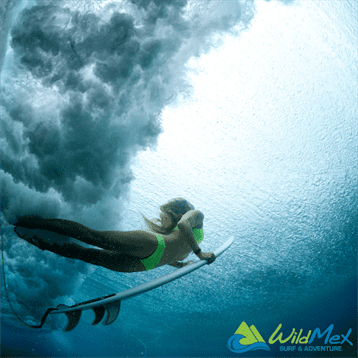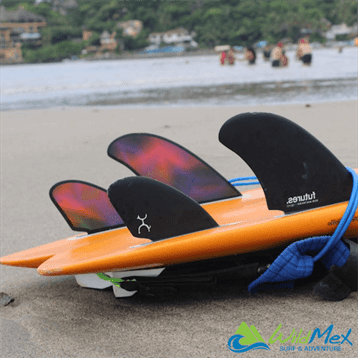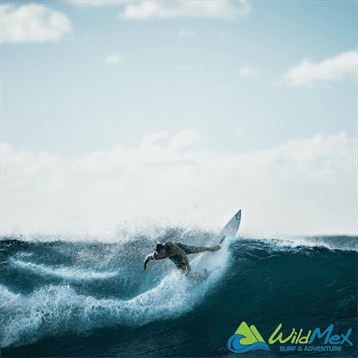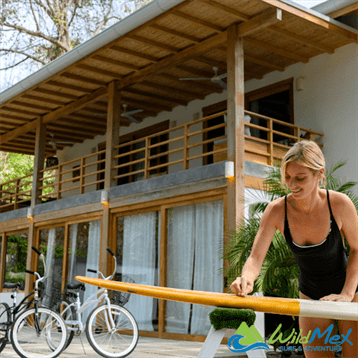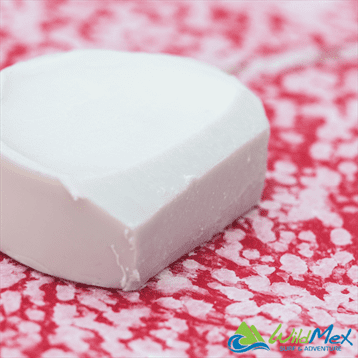Hiking Trails in the Punta Mita and Sayulita Area
A Visitor’s Guide to Animal Species
Hikes in Punta Mita with WildMex are full of fun-engaging activities for an outstanding day!

Are you ready to spot some of the coolest animals on our Hiking Trails in Sayulita and Punta Mita?
There’s no doubt that Wildlife spotting on hikes always doubles the fun and boosts your excitement levels! Fortunately, most of the animals found on our hikes in the Pacific Northwest are non-aggressive and it is also possible that you might not see any wildlife during a hike.
However, reading this blog and learning about the wildlife and the best way to spot it/ what to do if you do spot something whilst out hiking, will help you be fully prepared for whatever our wondrous nature has in store for you.
Excited to explore the wildlife that you might see on the Hikes in Punta Mita? This blog will tell you everything you need to know. So, let’s make a start!
What to expect on our hiking trails in Sayulita and Punta Mita?
Hikes in Punta Mita and Sayulita bring so many mesmerizing activities for an outstanding experience.
These activities range from crossing the rocks while hiking through the shady areas, discovering the beautiful plants and animals, and exploring the local towns, jungles, and beautiful beaches.
In addition, hiking in San Pancho and the famous monkey mountain offers a fantastic opportunity to traverse the beautiful and relaxing views of the area while exploring eye-catching plant and animal life.
Here are some of the coolest animals that you might find within our Jungle Hikes in Punta Mita and Sayulita…
White Nosed Coati

As his name points out, the White Nosed Coati is from the species of Coati which is also famously known as Pizote, Tejon, and Bin-Dog, etc. These Coaties are associated with the Procyanidae family.
They are often found by adventure-seekers hiking in Punta Mita or on Monkey Mountain as many of them inhabit themselves in the woody areas of forests.
An amazing fact about them is that they love climbing trees and picking up food for themselves. They love eating fruits, insects, small vertebrae, and eggs.
While climbing on trees, they use their tails to maintain balance. They also insert their nose into the flowers on trees to ingest nectar from them! Look up high for the best chance to spot these beauties!
Green iguana

The Green Iguana belongs to the family Iguanidae and is most commonly found in western Mexico (exactly where we are!). The long spines are present all over their back with yellowish/brownish keeled scales to their tails.
Green Iguanas are fast-moving, excellent climbers, and famous as solitary animals. Trees and rocky surfaces are the ideal habitats for them, so Hiking Monkey Mountain in Punta Mita is the ideal location to spot them.
Most Green Iguanas feed on small animals, insects, and eggs. However, some also eat fruits, stems, and flowers.
Tlacuache

Just like an Australian kangaroo, baby Tlacuache also spends a noticeable time in the pouch of the mother. After learning the basic life lessons in the mother’s pouch, it later comes out to start experiencing life itself.
These Tlacuaches are harmless animals with low body temperatures. This feature also makes them incapable of carrying and transmitting rabies.
In addition, Tlacuache are omnivorous which means that they eat fruits, plants, small animals, and even mice. You’ll most commonly find them on jungle Hikes in Punta Mita and Sayulita.
Boa Constrictor

The Boa Constrictor is a species of heavy-bodied snake, also known as the Red-tailed Boa.
An interesting fact about Boa Constrictor is that the females are greater in size than the males. A mature Boa constrictor female is approx the size of 7-10 feet while a mature male ranges within 6-8ft.
Young ones easily climb on trees and shrubs while the older ones become terrestrial due to their heavyweight.
They mainly feed on the eggs of other animals. However, they also rely on eating insects, small animals, and rodents. Stay alert and watch your step – you might spot one on your jungle hike in Sayulita.
(Always remember to keep your distance from wild animals, especially if you’re hiking with children!)
Armadillo

Armadillos are solitary mammals of medium-sized that inhabit grasslands, rain forests, and dry scrubs.
Due to being sexually dimorphic, their males are bigger in weight and height than the females.
The feature that makes them unique is their outer body where bony plates/armors cover with leathery skin. These armors are flexible coverings but make a harder outer surface for the animal’s protection.
An amazing fact about Armadillos is that they eat approx 500 varying foods. Among these, the most common ones include spiders, snails, grubs, bees, wasps, and a number of reptiles.
White-Tailed Deer

The White-tailed Deer is native to Central and North America, and also South Africa. During summer and spring, it maintains a reddish-brown coat that turns to grey-brown upon the arrival of winter.
Its name, ‘White-tailed’ Deer, is due to its white color under the tail that stays the same throughout the year.
Unlike other Deers, White-tailed Deers eat plenty of food. Legumes, leaves, and grasses are their favored ones here in Punta Mita and Sayulita.
Another interesting fact about the White-tailed Deer is that they use varying modes of communication. They make audible noises for protection while also communicating through making markings, scents, and body language. This Deer is often spotted hiking in San Pancho!
Javalina

The Javalina, also called the Musk Hog, is abundantly seen in many parts of tropical/subtropical America.
On average, the Javalina has a height of approx 20-24 inches and weighs between 35 to 60 pounds. They eat a great variety of foods such as insects, nuts, vegetables, plants, lizards, fish, eggs, frogs, and even snakes.
They live in groups and inhabit the roots of trees and also the caves. They are usually harmless but have been known to attack if felt threatened in any way. We recommend keeping your distance and admiring from afar if you do so happen to spot one.
Jaguar

The Jaguar is one of the world’s largest cats and is native to the American region. It outweighs tigers and lions by weighing in at approx 96kgs in body mass. In America, it is famous as the largest cat species while it comes as the third-largest in the world.
Its pale yellow color with black spots enhances its beauty but it goes without saying, that it’s one of the most dangerous animals in the jungles here.
The good news is that the Jaguar is less common to see on our hikes but they are known to inhabit the area where you’ll hike such as our Jungle Hikes in Punta Mita. Hence, why we always recommend going with a WildMex guide!
The sad news is that the jaguar is an endangered species here as it is facing habitat loss. Therefore, it is important to never threaten a jaguar if you see one hiking. If you do happen to spot one whilst you’re out hiking without a guide, we recommend simply walking backward, away from the Jaguar, and to a safe place as slowly as possible, whilst keeping your face towards it at all times – (Jaguars like to attack from behind). If you’d like to donate to the local cause to help this endangered species, please follow the link here.
Additionally, immediately inform our team and the nearby wildlife offices in such situations. Contact info here.
How To Spot Wildlife While Hiking?

Here are our top tips for your best chance at spotting wildlife during hiking in our local area!
- Keep your eyes open and be observant whilst hiking.
- Avoid making noises or loud voices whilst hiking trails in Sayulita.
- Never attempt to threaten the wildlife in any way.
- Make small groups of two or three people while hiking.
- Keep your moves slow and small and watch around you.
- Make sure you also carry a camera with you that includes a telephoto lens.
- If you see any wildlife, simply step back or move on quietly without letting them know of your presence.
- Maintain a distance between you and wildlife for the safety of both of you.
There is nothing more enjoyable than hiking in our wondrous jungles and spotting local wildlife!
Let’s bring a refreshing change to your beach holiday by planning a Hike in Punta Mita and Sayulita with WildMex.
Jump here for all prices, packages, and hike details, or book your hiking tour with us here and now for an outstanding experience, you can look forward to on your next trip!
Peace & Love,
WildMex

